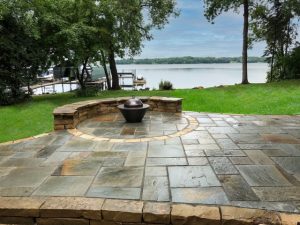Not everything that grows green is good for your outdoor space. Most people try to surround their family homes with plants, trees and bushes. Those who have bigger areas around their houses tend to use it to their advantage. People build gardens and courtyards to spend time with family and friends. Children can play with each other and guests can pay a visit on a festive occasion. Grass that grows around the house sometimes needs more care than plants. Lawn mowing is normally enough to maintain grass in your garden. You should, however, practice caution. Moss can grow in grassy areas and threaten yours and your family’s health. To avoid moss growth, follow these tips on killing garden moss this year.
Killing Garden Moss
Garden Moss
Noticing moss growing in your garden is such sad news for any family or gardener. Because you realize that soon it will kill all grass and make your lawn look like a swamp. If this happens at the end of the summer, you might reckon that winter will cure it, but if it is spring when moss starts settling down in your garden then the whole blossoming season is going to be ruined and your lawn will only be available for pets. But do not rush to shut your garden down until the next season. Just like moss makes your lawn an unsuitable place for grass to grow you can create the conditions in which moss itself will not be able to exist in your garden. Before you start getting rid of moss from your garden try to understand the reasons it appeared there.
Where it Grows
Most of the times moss starts to grow in the places where nothing is growing and then simply spreads around. It also gives you a hint that something is wrong with your lawn. The problem is not that moss kills your grass like a weed. Simply grass does not want to grow on your lawn and you need to find out why. Dying grass creates an ideal environment for moss. To prevent the appearance of the latter you need to eliminate the reasons for the absence of the first.
If you have compacted soil in your garden, you would probably have problems with dying grass and excess of moss. Grass roots are turned into soil compaction and a smooth area is created for moss to hold onto.
If the soil in your garden is constantly damp, the roots of the grass will likely suffocate in it and provide an ideal environment for moss bloom.
Low pH and acid kill the grass as well, and moss easily thrives in high acid soil.
Lack of sun does not help your grass to grow while shade is the perfect amount of light for moss to kill it.
Once you have established the problem with your lawn you can start preparing for the extermination of moss. First, get a moss killer that contains ferrous sulphate. The dead moss needs to be raked off from the area which is reserved for the green lawn. Then spread the grass seeds all over and keep them moist until the grass shows symptoms of growing. And remember that if you do not exercise sufficient lawn care, moss is likely to appear again. So follow these tips on killing garden moss and you will have a beautiful landscape that lasts all season long!

